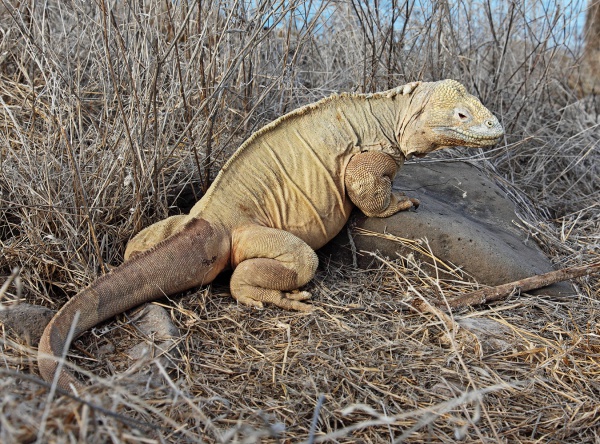Facts About Santa Fe Land Iguana
Conolophus pallidus, commonly known as the Santa Fe land iguana, is a remarkable species of lizard within the Iguanidae family. These fascinating creatures are endemic to Santa Fe Island in the Galapagos. They constitute one of the three species within the Conolophus genus and were first described by the American zoologist Edmund Heller in 1903. Some taxonomists continue to debate whether C. pallidus is a distinct species or merely a variant of the Galapagos land iguana found on other islands in the archipelago.
The name "pallidus" is derived from Latin and means "pale" aptly characterizing their lighter coloration compared to their close relative, C. subcristatus. Santa Fe land iguanas exhibit a paler yellow hue and possess a longer, more tapered snout along with more pronounced dorsal spines. They can grow up to 3 feet (0.91 meters) in length and weigh up to 24 pounds (11 kilograms). To regulate their body temperature, they bask in the sun during the day and retreat to burrows at night to conserve heat.
Primarily herbivorous, these iguanas rely heavily on the prickly-pear cactus, a crucial food source given the scarcity of fresh water on the islands. They also consume insects, centipedes, and carrion to diversify their diet. During the rainy season, they take advantage of additional water sources and feast on the yellow flowers of the Portulaca genus. In a fascinating example of symbiosis, they have a mutualistic relationship with the island's finches, which help remove parasites and ticks from the iguanas while enjoying a meal themselves.

 Colombia
Colombia